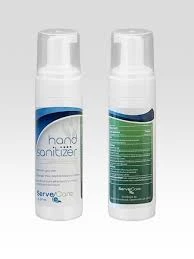Understanding Poly Aluminum Chloride and Its Applications in Water Treatment and Industry
Understanding Poly Aluminum Chloride A Comprehensive Overview
Poly Aluminum Chloride (PAC) is a versatile and widely used coagulant in water treatment processes. It is a polymeric aluminum compound that is synthesized through the reaction of aluminum hydroxide with hydrochloric acid. PAC has gained popularity due to its effectiveness in purifying water and its ability to clarify wastewater in various industries.
Chemical Composition and Properties
PAC is characterized by its unique chemical structure, which comprises aluminum ions bonded with chloride ions and hydroxyl groups. Its general formula can be represented as [Al2(OH)nCl6-n]m, where ‘n’ denotes the degree of polymerization. This structure gives PAC its favorable properties as a coagulant. With a high charge density and variable molecular weight, PAC exhibits excellent destabilization of colloidal particles in water.
One of the key advantages of PAC over traditional coagulants, such as aluminum sulfate, is its improved solubility. PAC dissolves readily in water, which allows for a more efficient and immediate reaction during water treatment processes. This feature also means that lower doses of PAC can achieve the same or better results compared to other coagulants, leading to reduced chemical costs and less sludge generation.
Applications in Water Treatment
The primary application of PAC is in water treatment facilities, where it is used for the coagulation and flocculation of suspended particles. When added to water, PAC destabilizes colloidal particles, allowing them to clump together (or flocculate) into larger aggregates. These larger flocs can then be easily removed from the water through sedimentation or filtration.
what is poly aluminum chloride

PAC is employed in the treatment of drinking water, industrial wastewater, and municipal sewage. Its efficiency in removing turbidity, color, and organic matter makes it a popular choice in regions facing challenges related to water quality. In addition to water treatment, PAC is also utilized in industries such as paper manufacturing, textiles, and food processing, where it helps improve the quality and safety of the end products.
Environmental Impact and Safety
The use of PAC is considered safe for both humans and the environment. Studies have shown that PAC does not introduce significant harmful residues into treated water. Its effective performance at lower doses also results in less environmental impact, contributing to sustainability efforts in water management.
Furthermore, PAC is less corrosive than aluminum sulfate, which makes it easier to handle and reduces wear on equipment employed in water treatment facilities. This property enhances the safety of workers dealing with chemicals in industrial settings.
Conclusion
In summary, Poly Aluminum Chloride (PAC) is an essential chemical compound in the field of water treatment. Its unique properties, coupled with its versatility across various applications, make it a preferred choice for achieving effective water purification. As water quality continues to be a global concern, the use of PAC will likely expand, contributing to safer drinking water and more sustainable industrial practices. Understanding these characteristics can help us appreciate the important role PAC plays in modern water treatment solutions.
-
Water Treatment with Flocculant Water TreatmentNewsJun.12,2025
-
Polymaleic AnhydrideNewsJun.12,2025
-
Polyaspartic AcidNewsJun.12,2025
-
Enhance Industrial Processes with IsothiazolinonesNewsJun.12,2025
-
Enhance Industrial Processes with PBTCA SolutionsNewsJun.12,2025
-
Dodecyldimethylbenzylammonium Chloride SolutionsNewsJun.12,2025





